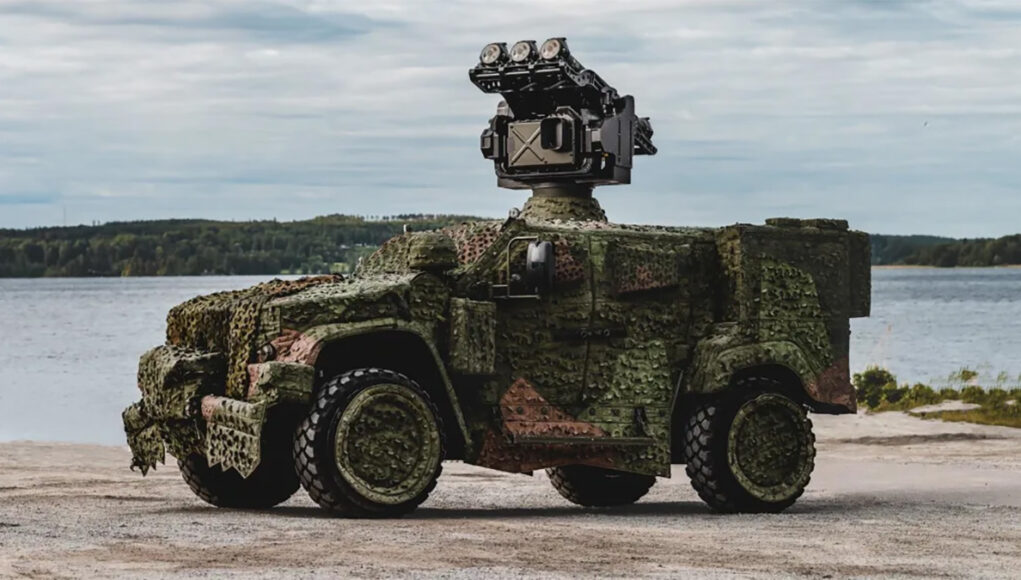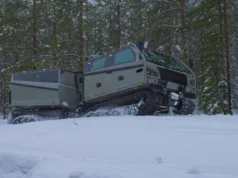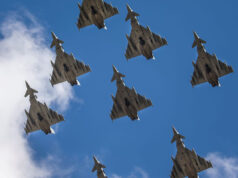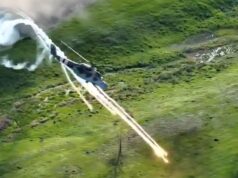Swedish defence company Saab and American manufacturer Oshkosh Defense have unveiled a new missile system integrated onto the Joint Light Tactical Vehicle (JLTV).
The system demonstrates the capabilities of Saab’s RBS 70 NG Mobile Firing Unit (MFU) along with its tactical electronics and camouflage system.
The exhibit at Saab’s stand, identified as H7-210 at DSEI, aims to highlight the “growing requirements for mobile air defence” and enhance land-based capabilities against current and emerging threats.
The MFU is equipped with Saab’s RBS 70 NG missile system, featuring “unjammable laser guided missiles, which provide threats with little forewarning and even less means for countermeasures.”
Görgen Johansson, head of Saab’s business area Dynamics, remarked, “We are now offering the most modern mobile air defence solution, which is a perfect match with our existing multispectral camouflage capabilities on the JLTV vehicle. We are ready to support Oshkosh’s current customers as well as offering this to new users.”
The system also incorporates Saab’s Barracuda Mobile Camouflage System, which not only conceals the vehicle but allows for rapid deployment against air-based targets. In addition, Saab’s tactical electronics and low-latency video distribution system aim to enhance the crew’s situational awareness on the battlefield.
This unveiling follows a partnership announced between Saab and Oshkosh Defense in June 2022, which focused on the integrated solution of Saab’s camouflage system onto the JLTV.
You can read more by clicking here.














Why isn’t the UK doing the same thing with its Martlet or triple launch Starstreak?
Would certainly like to see them and others trialed on Supercat vehicles, after all we managed to incorporate ASRAAM onto it in a shot when we needed to give something to Ukraine not to mention similar mashups with Brimstone. All very well going for Boxer variations on the theme but if Ukraine has shown us anything we need as many flexible base solutions on a range of relatively ‘cheap’ base platforms as possible, not just high end expensive solutions in small numbers who the soldiers under threat will rarely see most like.
funny enough can’t remember the details but posed the question a few weeks back whether there were light anti air or anti tank solutions being fitted to the JLTV.
Hi Spy, good comments. British Industry ingenuity solutions like the Supacat ASRAAM could be part of the Shorad GBAD for UK airfields, ports, radar station. Shared inventory too, and a possibly cheaper and more mobile solution than the NASAM. Hope it gets further developed to compliment Sky Sabre CAMM /CAMM-ER. Wonder if it could be adapted for a naval mount too, even putting Martlet/Starstreak /ASRAAM into a RAM style launcher linked in with a Phalanx network?
Starstreak have been mounted on CVR(T) Stormers for ages, and the LML (3 missiles) was designed by the company to be mountable on LandRovers (and HMMWVs), but I don’t think the BA has ever mounted it on a B Veh or wheeled A veh.
Morning Graham, yes, I’m aware of the Stormer. I was just commenting on these smaller mobile systems and wondering why the UK hasn’t had more export success with Starstreak/LML? I think India produces the later under licence. And the SeaStreak system that never got up. If that could have evolved into a RAM style system. Lots of good UK stuff and lots of competition around. Would be good to see some more wins for the UK alongside CAMM.
Expanding on Graham’s Stormer comment, one of the 6 Air Defence programs currently underway in the army is a new launcher vehicle for Starstreak. I hope they combine it with some sort of AA gun too.
Thanks Quentin. UK exported Starstreak to South Africa, Thailand, Indonesia and Malaysia. Not sure why they didn’t sell more widely but there must be quite a choice of competitors out there, as you say.
Thanks too. I was not aware of any of that. Hopefully there’s a bit of extra no ER development for this system going on as part of the Army programs Daniele mentioned.
A lot of the issue is I believe that Starstreak requires a degree of operator skill. Whereas something like Stinger for instance does not. It is simply lock on to target, make sure IFF comes back as negative and fire off the missile. The missile then does all the work. Both RBS70 and Starstreak require the operator to track the target throughout the engagement. This requires more training than a simpler fire and forget MANPAD.
However, the benefit of both RBS70 and Starstreak is that they are next to impossible to jam, so with a trained operator there is more chance of a hit.
I was under the impression that ADAD gave automatic tracking.
They trialed a similar solution on a far cheaper 4×4 when they where competing for an Indian contract. It wouldn’t surprise me if they have been mounted on the back of pick up trucks while deployed in Ukraine.
The RBS70 won the actual testing but they chose a Russian system that didn’t performed according to the requirements.
No doubt good system could work well in Ukraine along side starstreak .
Ukraine were given a number of RBS70 units as MANPADS. They have been quite successful in shooting down a number of helicopters and drones. Public information sites say they have knocked down at least three Ka-52s.
Why they say it is unjammable!? a laser is jammable.
RBS70 is a laser beam riding system. Which means unlike weapons such as Paveway or Brimstone, the missile doesn’t have a nose seeker looking for a laser reflection. Instead the firing unit uses semi-automatic command to line of sight (SACLOS) to keep the target on a crosshair. The firing unit measures the angle between the crosshair and the missile. The laser then feeds the delta angle between the firing unit and laser to the tail of the missile, which has a laser sensor fitted. This is used to command the missile to steer towards the target, i.e. to minimize the delta.
With RBS70 at no point is the target “painted” with the laser. This is different to how Starstreak works, as it paints the target with a pair of lasers to form a mapped grid over the target. Which the firing unit uses to analyse where the missile is within the grid, then sending a command to the missile to steer towards the target.
It is near impossible to jam the RBS70, unless you can get the jammer in-between the firing unit and missile. Similarly with Starstreak, as the missile is also looking backwards towards the firing unit. One possible way is to use a laser to try to dazzle/burn out the firing unit. Or to fire off a dense obscurant to form a opaque cloud, so that the target aircraft can hide behind. Both options aren’t really feasible, hence why an aircraft targeted by either RBS70 or Starstreak has very few chances of escaping.
For me, one of the main things that has come from the Ukraine conflict, is that everything does NOT have to cost millions and billions in a land based conflict.
Regarding the camouflage… wouldn’t you be able to create the same effect, by draping a came net over the vehicle, and sticking it down around the edges?
Nature would then produce a ripple effect on the net, with any light breeze. This would then ‘interfere’ with depth perception, making it difficult to see oner distance?
This is likely a Saab Barracuda camouflage system. This system can also lower the vehicle’s IR signature, where a traditional camo net cannot.
Its just fancier camo nett/covers
True, but compared to camo nets of old. They are significantly more expensive and do include technology. Rather that the netted string, hessian and cloth. One of the Barracuda camo variants can also do RF shielding (much like a Faraday cage). Which is supposed to hide a vehicle by changing the recognizable shape from radar based seekers, as used by Hellfire/Brimstone type missiles.
Next stage will be full on Predator chameleon camo…..